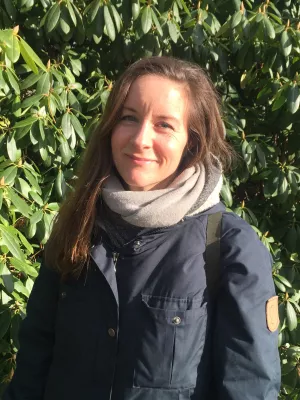
Maria von Post
Forskare

Effects of supplemental winter feeding on House Sparrows (Passer domesticus) in relation to landscape structure and farming systems in southern Sweden
Författare
Summary, in English
CapsuleHouse Sparrow (Passer domesticus) populations in south Swedish farmland are not affected by supplemental winter feeding, irrespective of agricultural landscape type or presence of animal husbandry, although winter populations declined more in mixed farmland and when farms contained animal husbandry. AimsTo investigate whether food limitation of House Sparrow population size during the winter varied spatially in relation to agricultural landscape intensification and farm management. MethodsWe experimentally increased the winter food supply for populations on farmsteads in replicated landscapes that differed in agricultural intensification (open plains versus mixed farming) and/or farm management (crop farming versus animal husbandry), and estimated possible differences in effects on winter population change. ResultsWe found no effect of supplementary winter feeding on changes in House Sparrow population sizes over the winter, irrespective of agricultural landscape type or presence of animal husbandry at the farm. However, we found a significantly larger winter population decline in mixed farmland and when farms contained animal husbandry. ConclusionsThe results suggest that House Sparrow populations in south Swedish farmland are not primarily limited by winter food availability. Alternatively, supplemental winter feeding may augment interspecific competition or attracts predators, offsetting any positive effect on population change. However, the stronger population decline in landscapes in which more breeding resources may be available (animal husbandry farms, mixed farmland), suggests stronger intraspecific competition during the winter in line with the resource separation hypothesis.
Avdelning/ar
- Biodiversitet
- Centrum för miljö- och klimatvetenskap (CEC)
- BECC: Biodiversity and Ecosystem services in a Changing Climate
- Biodiversitet och bevarandevetenskap
Publiceringsår
2013
Språk
Engelska
Sidor
238-246
Publikation/Tidskrift/Serie
Bird Study
Volym
60
Issue
2
Dokumenttyp
Artikel i tidskrift
Förlag
British Trust for Ornithology
Ämne
- Earth and Related Environmental Sciences
- Ecology
Status
Published
Forskningsgrupp
- Biodiversity and Conservation Science
ISBN/ISSN/Övrigt
- ISSN: 0006-3657